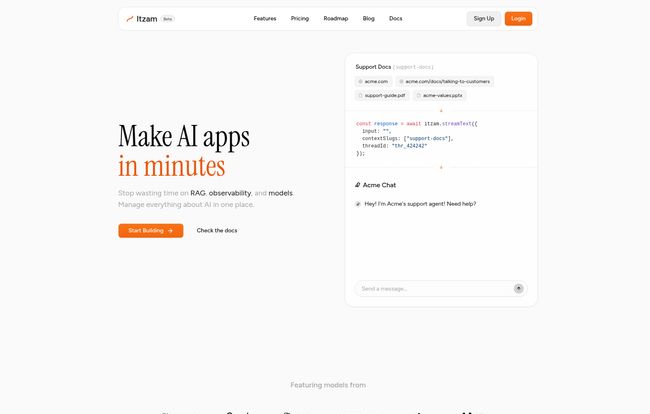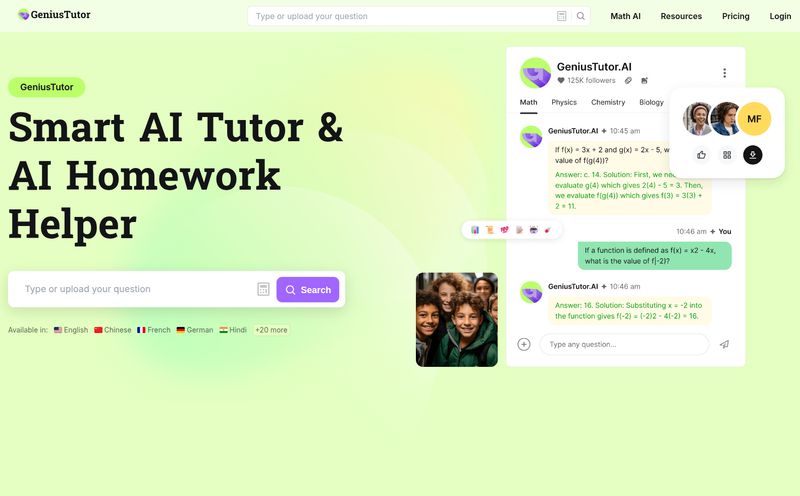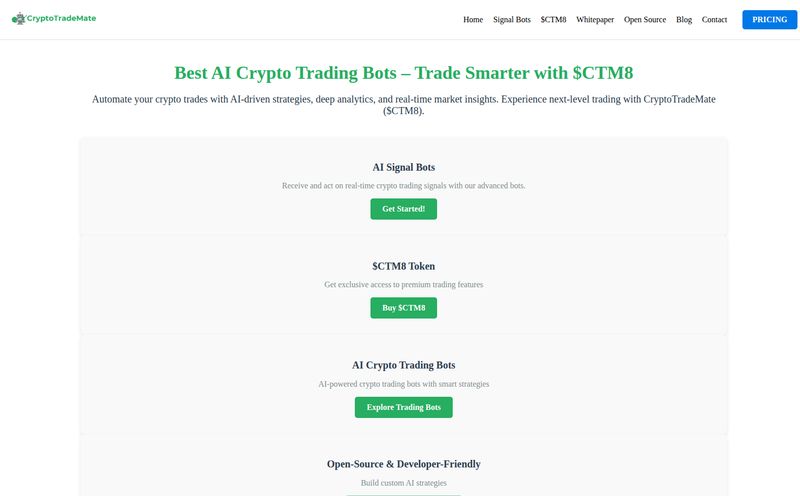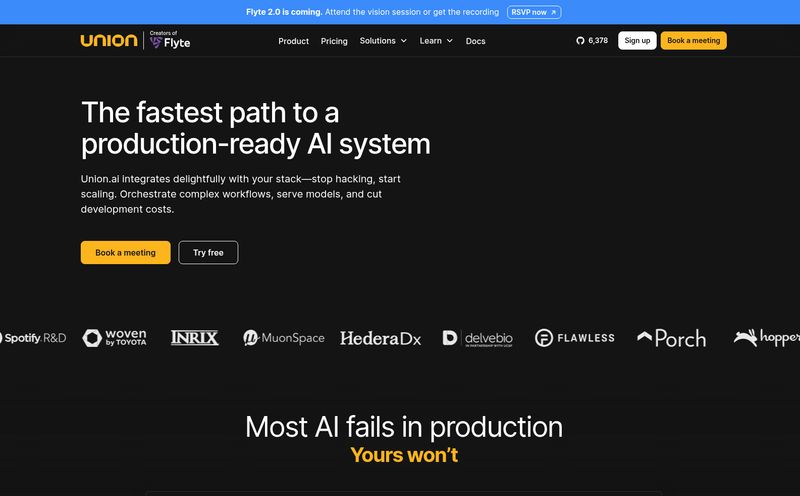If you've spent any time in the trenches building something—anything—with AI over the past couple of years, you know the feeling. One tab open for OpenAI's playground, another for Anthropic's docs, a third for Google's new Gemini model, and a spreadsheet somewhere trying to make sense of the billing. It’s a chaotic symphony of APIs, keys, and ever-shifting model names. It feels less like cutting-edge tech and more like trying to wrangle a herd of very intelligent, very expensive cats.
Every so often a tool pops up that promises to fix all this. A single dashboard to rule them all. Most of them are… fine. They do one thing well but miss the bigger picture. So when I first heard about Itzam, I was skeptical. Another one? But after spending some time with it, I gotta say, this one feels different. It's less of a single tool and more of a central nervous system for your app's AI integration.
So, What Exactly is Itzam?
Think of Itzam as a clever abstraction layer. It sits between your application and the AI models you want to use (like OpenAI's GPT series, Anthropic's Claude, or Google's models). Instead of you having to build separate connections and logic for each one, you just talk to Itzam. Itzam then handles the messy business of talking to the right AI, managing the prompts, and even consolidating the billing. It’s like having a multilingual translator and an accountant on call 24/7, all rolled into one slick platform.
You’re essentially outsourcing the headache. Instead of baking your logic for a specific model like gpt-4-turbo directly into your app's code, you point it to an Itzam workflow. This simple shift is where the magic really begins.

Visit Itzam
The Features That Actually Matter
Look, feature lists can be boring. Every platform has 'analytics' and an 'API'. But a few of Itzam's features genuinely made me sit up and take notice because they solve real, tangible problems I've faced on projects.
Model & Prompt Hot-Swapping is the Real Game-Changer
This is it. This is the headline feature for me. Hot-swapping. What does that mean? It means you can switch the underlying AI model your application is using without a single line of code change. Without a redeployment. With just a click in the Itzam dashboard.
Imagine this scenario: you launched your new chatbot feature using Claude 3 Sonnet because it was the best for the price. A month later, OpenAI releases GPT-5, and it’s reportedly 20% better at your specific task. In the old world, that’s a new development ticket, coding changes, testing, staging, and a full production deployment. With Itzam, you log in, select the new model from a dropdown for that workflow, hit save, and you’re done. You can literally A/B test multi-billion dollar AI models on the fly. It's honestly a little bit wild how powerful that is.
And it's not just models. You can do the same with your prompts. Tweaking a prompt to get a better response? You don't need to bother a developer. You can just edit it right in the Itzam 'Playground' and have it go live instantly. This empowers the whole team, not just the engineers.
Finally, Unified AI Billing That Makes Sense
My accountant thanks platforms like this. Juggling invoices from OpenAI, Google, and Anthropic is a small nightmare. Itzam pulls all of that spending into one place. You get a single bill and, more importantly, a single dashboard to see exactly what you're spending and where. You can see which models are costing the most, which workflows are racking up the tokens, and get a real handle on your AI spend. For anyone who's ever had to justify a surprisingly high cloud bill to their boss, this feature alone is worth its weight in gold.
The Playground: Test Before You Deploy
The Itzam Playground is their name for a sandbox environment, and it’s brilliantly implemented. It’s a space where you can experiment with different models and prompts in a live-fire exercise without affecting your actual application. Want to see if Claude 3 Haiku gives a more concise answer than GPT-3.5 Turbo for a customer support query? You can run them side-by-side in the Playground, compare the responses, and make a decision based on real results, not just a gut feeling.
Who Is This Tool Really For?
I can see a few groups getting a ton of value out of Itzam.
- Indie Devs & Startups: Speed is everything. The ability to integrate AI with just a few lines of code and then swap models without engineering overhead is a massive advantage. You can stay nimble and always use the best tech available.
- Product Managers & Growth Teams: Itzam decouples AI experimentation from the development cycle. A PM can now test a dozen prompt variations or a new AI model to improve a feature without ever creating a ticket for the engineering team.
- Established Companies: For larger teams, the value is in governance, control, and cost management. Having a centralized place to manage all AI integrations, monitor performance, and track spending is crucial for scaling responsibly.
Let's Talk Money: Itzam's Pricing Breakdown
Okay, the all-important question: what's this going to cost me? The pricing model is pretty straightforward, and frankly, quite generous. I've seen way worse. One crucial thing to understand: you still pay the AI providers (OpenAI, etc.) for your actual token usage. Itzam is the management layer you pay for on top of that. Think of it like paying for a fancy TV remote—you still have to pay for your Netflix and Hulu subscriptions.
Here’s a quick breakdown based on their pricing page:
| Plan | Price | Key Features |
|---|---|---|
| Hobby | Free | 2 workflows, Model hot-swap, Analytics, 7-day data retention. Perfect for getting started. |
| Basic | $8 / month | Everything in Hobby, plus 10 workflows, 30-day data retention, priority support. |
| Pro | $16 / month | Unlimited workflows, early access to features, unlimited data retention. A no-brainer for any serious project. |
| Enterprise | Contact Us | Everything in Pro, plus custom integrations, feature prioritization, and more for large teams. |
In my opinion, the value here is pretty clear. The free tier is more than enough to kick teh tires and build a small project. But the Pro plan at $16 a month? For a business building a product on AI, that fee is background noise. The amount of developer time it saves would pay for itself in the first few hours.
The Not-So-Perfect Parts (Because Nothing Is)
Okay, let's get real for a second. No tool is perfect. While I'm pretty high on Itzam, there are a few things to keep in mind.
First, you're adding another dependency to your stack. You're relying on Itzam's platform to be up and running. If they have an outage, your AI features could be affected. That’s a trade-off you make for the convenience. To their credit, this is a standard concern for any SaaS tool you integrate.
Second, while it simplifies billing, it doesn't eliminate costs. If you're running a million requests through GPT-4o, your bill is still going to be huge. Itzam gives you visibility and control, but it's not a magic money-saving wand. It's on you to use that data to optimize your usage.
Finally, there's always a bit of a learning curve. Yes, they boast about a 4-line integration, and that's true for the basics. But to really master the workflows, custom contexts, and get the most out of it, you'll need to spend a little time in their docs. It’s an investment, but I think its one that pays off.
My Final Take: Is Itzam Worth Your Time?
Yes. Absolutely, yes.
I’ve seen the evolution of dev tools for years, and Itzam is hitting on a real, persistent pain point in the AI space. The chaos of managing multiple models is a growth killer for so many projects. Itzam acts as a calming force, a central command from which you can direct your AI strategy without getting bogged down in the implementation details.
A few years ago, I was on a project where we spent three weeks building a system to A/B test two different language models. Three weeks. A tool like Itzam would have turned that into an afternoon's work. The value isn't just in the features; it's in the speed and agility it gives back to your team.
If you're building anything with AI, I seriously think you should give their free plan a spin. It might just be the piece of your stack you didn't know you were missing.
Frequently Asked Questions about Itzam
- What AI models does Itzam support?
- Itzam supports a wide range of models from the major providers, including OpenAI (the GPT series), Anthropic (the Claude family), and Google (like Gemini). They are continually adding support for new models as they are released.
- How does Itzam's billing work? Do I still have to pay OpenAI?
- Yes, you do. You pay Itzam for their platform subscription (the Free, Basic, or Pro plan). You then connect your own AI provider accounts (like OpenAI), and Itzam routes the requests through them. You are still billed by the provider for the tokens you use, but Itzam gives you a unified dashboard to track all that spending in one place.
- Is Itzam difficult to integrate into an existing project?
- Not at all. It's designed for easy integration. For most languages, it's a matter of installing their SDK and changing your API call endpoint to point to Itzam instead of directly to the AI provider. It's one of the easier integrations I've come across.
- Can I really use Itzam for free?
- Yep! The Hobby/Free plan is free forever and includes core features like model hot-swapping and analytics for up to 2 workflows. It's a great way to test out the platform for a personal project or a proof-of-concept.
- What is "model hot-swapping" again?
- It's the ability to change the AI model your application uses (e.g., from GPT-4 to Claude 3) through the Itzam dashboard with a simple click, without needing to change any of your application's code. It's fantastic for testing and upgrading models instantly.
Conclusion
The AI development space is moving at a breakneck pace. The top model today might be old news in six months. Tools that allow for flexibility and abstraction aren't just 'nice-to-haves' anymore; they're becoming essential for building resilient, future-proof applications. Itzam is a fantastic example of this new breed of AI infrastructure. It tames the chaos, empowers teams, and lets you focus on what you're building, not how you're connecting to the AI. And in this industry, that's a superpower.



